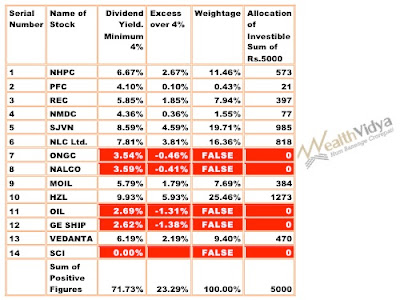It is not uncommon for readers of newspapers to come across companies listed on stock exchanges to come out with advertisements proclaiming their stellar annual results. These advertisements may most probably include an item on dividends stating, “Annual Dividend 300%”. While the reader may be awestruck by the large percentile number, some may not have actually understood its actual import. What is a dividend, annual dividend paid and dividend yield? Let us examine in the following paragraphs.
Dividend:
Companies exist to produce products and render services to satisfy the needs of people. In the process of meeting customer needs, corporations also strive to earn profits and distribute a portion of the profits to the shareholders in the form of dividends. In other words, dividends are the rewards to investors for having invested in the company.
Quantum of Dividend:
Dividend paid can be expressed in many different ways; as an absolute figure like $350 million or as a percentage of the total net profit of the company, 30% of the net profits or as dollars per share, say $0.50 per share or finally as a percentage of the nominal or face value of the share, say 300% of the nominal value of the share, which was the subject matter of the above sited advertisement.
Dividend Yield:
The quantum of dividend expressed in various ways is of little significance to the investor unless it is translated into a relationship to the price paid or amounted invested.
Let us examine the dividends paid by two companies, NMDC Ltd. The following data is extracted from the website of the popular financial newspaper, ‘The Economic Times’:
The face value of NMDC’s share is Rs.1, which means that the company paid Rs.1.50 and Rs.9.50 per share to shareholders on the two occasions for the financial year 2015-16.
The current market price of the share is Rs.100 on 29th July 2016 and therefore the website shows the dividend yield of 11%. The yield has been obtained by applying the formula:
Dividend Yield = (Total Dividend Received ÷ CMP) × 100
(Rs.11 ÷ 100) × 100 = 11%
The website calculated the yield based on the current market price of the share as the site is not an investor, does not hold shares, does not have a cost of investment, therefore.
However, an actual investor has a cost of investment, being the price paid while purchasing the share. Suppose an investor had actually purchased NMDC shares at say at Rs.83 apiece, the dividend yield is:
Dividend Yield = (Total Dividend Received ÷ Cost of Investment) × 100
(Rs.11 ÷ 83) × 100 = 13.25%
When different numbers of shares were purchased at different prices, then we take the weighted average holding cost as the cost of investment for calculating the cost of investment. Let us assume that an individual had purchased 100 shares at a price of Rs.126 and another 200 at Rs.100, the weighted average cost of investment will be:
Purchase 1
|
100
|
126
|
12,600
|
Purchase 2
|
200
|
100
|
20,000
|
Total
|
300
|
32,600
|
Weighted Average Cost of Investment = 32,600 ÷ 300 = 108.67
The Dividend Yield for this investor will be:
(Rs.11 ÷ 108.67) × 100 = 10.12%
Thus, ‘Dividend Yield’ is a very important metric with which an investor is able to measure the return on his investment from a particular stock or scrip.











